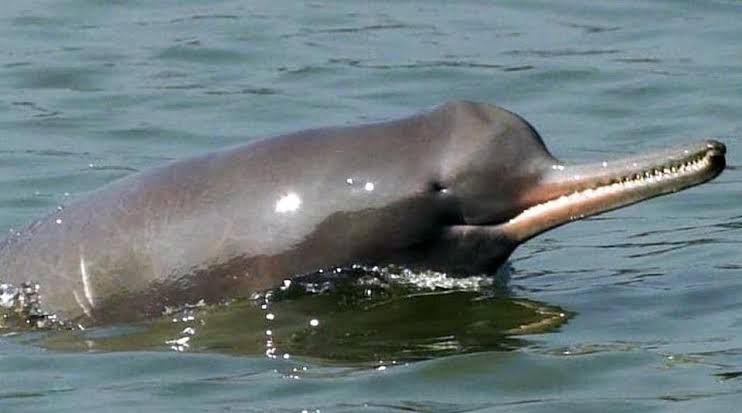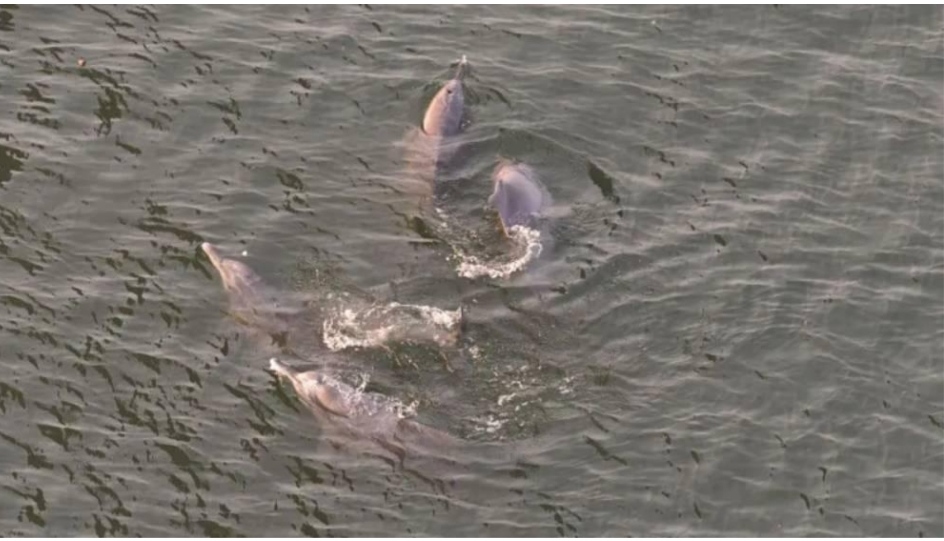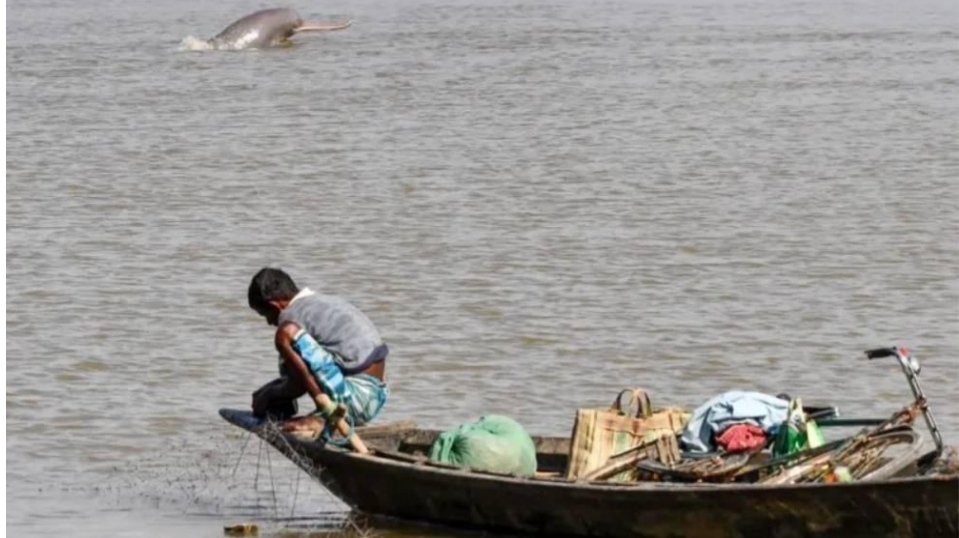India’s rivers Dolphins increasing in numbers

India’s longest and most holy river, the Ganges, is home to thousands of dolphins and now after decades their hope of survival is increasing day by day.
On 20 May 2013, India’s Ministry of Environment and Forests declared dolphins ‘nonhuman persons’ and as such has forbidden their captivity for entertainment purposes; keeping dolphins in captivity must satisfy certain legal prerequisites.
On the occasion of the 74th Independence Day, 15 August 2020, the Indian Ministry of Environment, Forest and Climate Change announced ‘Project Dolphin’ to boost conservation of both river and oceanic dolphins.
River dolphins aren’t like the ones found in oceans. They don’t leap out of the water in spectacular arcs; surface for long intervals or swim in an upright position.
Instead, they swim sideways, spend much of their time underwater, have long snouts and are almost completely blind.
These are Gangetic dolphins, a species of river dolphin – and India’s national aquatic animal – that’s found largely in the Ganges-Brahmaputra river system in the northern part of the country.
The first-ever comprehensive survey of river dolphins has revealed a population estimate of 6,327 dolphins mainly in the Ganga, Brahmaputra and Indus river basins.
The survey, conducted under Project Dolphin launched in 2020, gives the first-ever glimpse into the species’ status in India.India is home to two species of freshwater dolphins — Ganges (Platanista gangetica) and Indus (Platanista minor), which serve as bio-indicators of healthy river ecosystems.Both dolphins are classified as Endangered and listed as Schedule I species under the provisions of the Wild Life (Protection) Act, 1972.
The survey was done across 28 rivers across eight states of the country stretching over 8,507 km.
The majority of the dolphins — estimated to be 2,397 — were observed in Uttar Pradesh, followed by Bihar (2,220) and West Bengal (815).
Assam recorded 635 dolphins during the survey, Jharkhand recorded 162 while Rajasthan and Madhya Pradesh registered 95. Punjab recorded the lowest, with three dolphins.
The report stated that the dolphins act as an umbrella species and their conservation has direct impacts on their habitat and biodiversity.
The project aims to bring river and marine dolphins under its conservation programme and bring stakeholders together for science-based conservation of the species.
The report said little is known about their habitat preference, breeding habitat, and movement range and prey preference.
However, recent studies point out that the species prefer confluences, meanders and mid-channel islands.
The report stated that the number of Ganges river dolphins were estimated to be around 4,000-5,000 by the end of the 20th century, but dropped to about 1,800 individuals.
It added that since 1980, at least 500 known mortalities have been reported owing to bycatch and intentional killing.
The report pointed out that the Indus River Dolphin in India, currently observed in the Beas river, is worryingly low in numbers and demands urgent conservation attention. Out of 6,327 river dolphins – 6,324 are Gangetic and there are just three Indus dolphins.
A majority of the Indus dolphins are found in Pakistan as the river flows through both the South Asian countries.
Both these dolphin species are classified as “endangered” by the International Union for Conservation of Nature (IUCN).
Researchers from the Wildlife Institute of India surveyed 58 rivers across 10 states between 2021 and 2023 to produce the first comprehensive count of India’s river dolphins.
The origins of river dolphins are as fascinating as the creatures themselves. Often called “living fossils”, they evolved from marine ancestors millions of years ago, say scientists.
When the sea once flooded low-lying areas of South Asia, these dolphins moved inland – and when the waters receded, they stayed. Over time, they adapted to murky, shallow rivers, developing traits that set them apart from their ocean-dwelling cousins.
Experts say the new survey is crucial for tracking river dolphin populations. Since 1980, at least 500 dolphins have died – many accidentally caught in fishing nets or killed deliberately – highlighting the ongoing threat to the species.
Conservationist Ravindra Kumar Sinha says that up until the early 2000s, there was very little awareness about river dolphins.In 2009, the Gangetic river dolphin was declared India’s national aquatic animal to boost conservation. Steps like a 2020 action plan and a dedicated research centre in 2024 have since helped revive its numbers.
However, conservationists say there’s still a long way to go.
Dolphins continue to be poached for their flesh and blubber, from which oil is extracted to use as fishing bait. Other times, they collide with boats or get caught in fishing lines and die.Nachiket Kelkar of the Wildlife Conservation Trust told Sanctuary Asia magazine that many fishermen often didn’t report accidental deaths of dolphins fearing legal trouble.
Under Indian wildlife laws, accidental or targeted dolphin killings are treated as “hunting” and carry strict penalties. As a result, many poor fishermen quietly dispose of the carcasses to avoid fines.
River cruise tourism, which has picked up in India in the past decade, has further threatened their habitat. Dozens of cruise trips operate on both the Ganges and Brahmaputra rivers.
“There’s no doubt that disturbances from cruises will gravely impact the dolphins, which are sensitive to noise,” conservationist Ravindra Kumar Sinha told The Guardian newspaper.
Mr Sinha believes that increased vessel traffic could push Gangetic dolphins towards extinction, much like it did to Baiji dolphins in China’s Yangtze river.
River dolphins face threats partly due to their own evolution. Nearly blind, they rely on echolocation – high-pitched sound pulses that bounce off objects and return as echoes – to navigate murky waters.
While this trait suits their habitat, it also makes them vulnerable to modern threats.

Their poor eyesight and slow swimming speed make river dolphins especially prone to collisions with boats and other obstacles.
Adding to their vulnerability is their slow reproductive cycle – they mature between six and 10 years of age and females typically give birth to just one calf every two to three years.

But Mr Sinha is hopeful about the future of river dolphins in India. “Government initiatives have played a big role in saving the dolphins. A lot has been done but a lot more remains to be done too,” he says.




